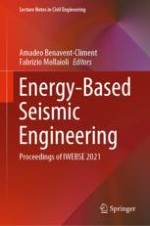2021 | OriginalPaper | Buchkapitel
Energy-Based Design Process for Passive Control Structures Considering Torsional Effect
verfasst von : Sanghoon Oh, Seunghoon Shin, Bahador Bagheri
Erschienen in: Energy-Based Seismic Engineering
Aktivieren Sie unsere intelligente Suche, um passende Fachinhalte oder Patente zu finden.
Wählen Sie Textabschnitte aus um mit Künstlicher Intelligenz passenden Patente zu finden. powered by
Markieren Sie Textabschnitte, um KI-gestützt weitere passende Inhalte zu finden. powered by
